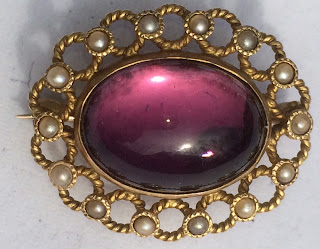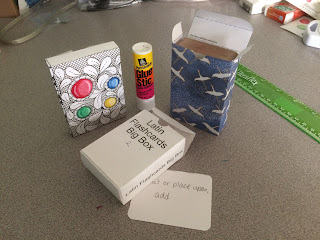I am periodically reminded of how
important it is, when talking to an expert in something, to use the correct
words. There are a lot of words that I
know the meaning of only in a general sort of way. That’s good enough when I
run into them in a story or hear them in a conversation about something else,
but not adequate when I need to communicate a problem.
Imagine the following conversation.
Me: “My computer doesn’t have enough
memory.”
Husband-who-works-with-computers-professionally:
“Really? Not enough memory?”
Me: “Yes, my computer keeps saying it
doesn’t have enough space to back up my Scrivener files.”
Husband: “Oh, your hard drive is full.”
Me (suddenly remembering that there is
such a thing as RAM): “Yes, that’s what I mean.”
Husband: “I’ll take a look.”
I’m not saying that actually happened,
mind you… but there are a lot of terms associated with computer use that haven’t always been clearly distinct in my
mind. There’s the computer itself (whatever components that refers to), and then there’s its operating system, any
applications that have been loaded onto it (including a browser), and then a
bunch of other files created by using those applications. It’s taken me a while
to distinguish between the applications and the (data) files created with them.
It doesn’t help that the applications are also themselves comprised of files. It’s easier to keep straight if I
think about the files for my novel, Adrift,
and distinguish them from the Scrivener program I used to write them with.
(A slight digression. Think of those
scam calls—“Hello, I’m Betty from Windows, and I’m calling about your computer…”
“No, you aren’t, because Windows is an operating system, not a computer
company, and anyway Microsoft isn’t going to give me that kind of personalized
attention unless I first give them buckets of money.”)
There are many other areas where I
discover my vocabulary is lacking. The construction of my own house is a bit of
a mystery. It has joists, studs, drywall (which is the same as sheetrock, I think), and up above it has a roof with
rafters, eaves, gables (maybe?), and soffits (is that part of the roof?). I don’t
think much about these words when I read them in passing, but when someone is
discussing potential damage to the floor from a leaky shower and whether it has
affected the joist, suddenly I'm interested.
I also need the right words so I can
describe a problem over the phone accurately—and without sounding stupid to
myself. I don’t want to tell the plumber, “The problem is the bathroom sink.
The faucet. I mean, the tap. That thing you turn to start the water where one
is for hot and one is for cold.” I’ve used the word “tap” before, but in the
moment when it matters, I find myself
wondering, “Is that the tap?”
Inadequate vocabulary is most a problem in discussing subjects that, while important, are not of interest to me. Since I’ve never been particularly into cars, it was some time before I really
caught on to the distinction between “wheel” and “tire”. I always sort of thought
of them as a unit, the four round things that roll. But don’t tell your husband
you think the wheel is damaged when you really mean the tire. You could give
him a heart attack. Or a stroke.
Okay, I’m exaggerating as a lead-in to
my last set of examples—medical terms. As a kid, I lumped together “heart
attack”, “stroke”, “heart failure”, “cardiac arrest”, “coronary”, and “apoplexy”
as terms for a bad thing that could happen suddenly and which seemed, in popular
expressions, to be linked to sudden shocks or anger.
Now that I’m older, I know that heart
attacks involve a problem with the blood supply to part of the heart muscle,
and strokes involve a problem with the blood supply to part of the brain. Not the same thing. On looking the other
terms up, I find that “coronary” is often used to mean “heart attack” and “apoplexy”
to mean “stroke”, but that heart failure means the heart is weak and not
working very well, and that cardiac arrest just means the heart has stopped for
whatever reason.
But being older and (a little bit) wiser doesn’t
mean there aren’t other health-related words I’m misusing. There was some word I used in
describing a problem to my doctor which I later realized probably had a very
specific meaning for the doctor, and not the meaning I had intended. Further,
the doctor, being used to the specific terminology, probably didn’t even
realize that I was using it loosely and inaccurately. And that is a communication problem.
I wish I could remember now
what the particular word was. Instead, I’ll just offer as an example “dizzy”
versus “light-headed”, which apparently have slightly different uses.
Using the right words is
important. With them, you can be precise in describing a problem with your
computer or your health. Without them, you can inadvertantly create a lot of
confusion. Eight-plus years studying philosophy contributed to my concern for correct
use of words (“if…then…” is not the same as “if and only if”), but it didn’t
teach me how to distinguish a joist from a stud, or a trot from a canter. Some
distinctions only get learned when experience makes them relevant.






